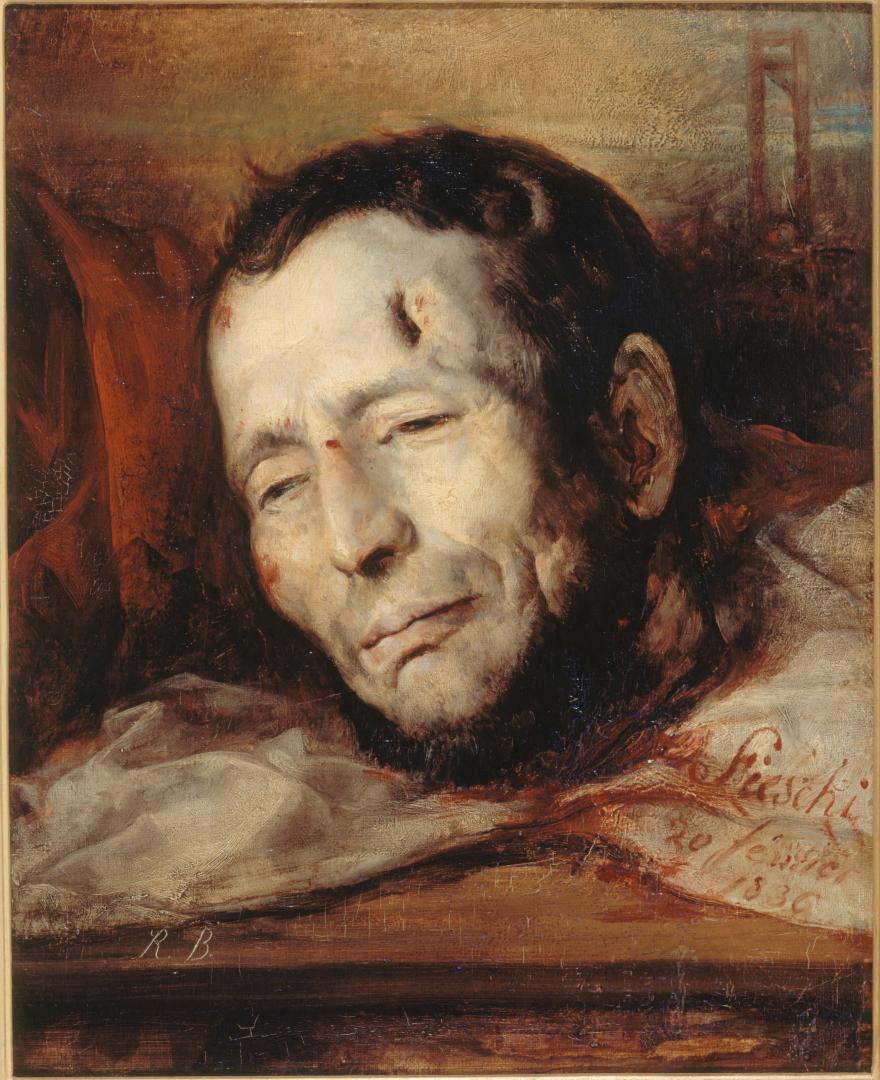,_conspirateur,_auteur_de_l'attentat_à_la__machine_infernale__du_28_juin_1835,_contre_Louis-Philippe_Ier.jpg)
1790 - 1836
Giuseppe Marco Fieschi
Summary
Name:
Giuseppe Marco FieschiYears Active:
1831 - 1835Birth:
October 13, 1790Status:
ExecutedClass:
Mass MurdererVictims:
18Method:
Volley gun attackDeath:
February 19, 1836Nationality:
France,_conspirateur,_auteur_de_l'attentat_à_la__machine_infernale__du_28_juin_1835,_contre_Louis-Philippe_Ier.jpg)
1790 - 1836
Giuseppe Marco Fieschi
Summary: Mass Murderer
Name:
Giuseppe Marco FieschiStatus:
ExecutedVictims:
18Method:
Volley gun attackNationality:
FranceBirth:
October 13, 1790Death:
February 19, 1836Years Active:
1831 - 1835bio
Giuseppe Marco Fieschi was born on 13 December 1790 in Bocognano, a small commune in Corsica. His parents, Louis and Marie Lucie of Pomonti, raised three sons: Thomas, Anthony, and Giuseppe. His family was marked by hardship as Thomas was killed in the Battle of Wagram in 1809, while Anthony was mute from birth. Giuseppe himself grew up tending sheep and lived a rural childhood before entering military service.
In 1808, he joined a Corsican regiment and was later sent to Naples and Russia, rising to the rank of sergeant during the Napoleonic Wars. By 1814, he was discharged and returned to Corsica. He soon became entangled in political intrigue, joining former King Joachim Murat in a failed attempt to retake Naples in 1815. The rebellion collapsed, Murat was executed, and Fieschi narrowly escaped with his life.
Back in Corsica, he turned to crime. In 1816, he was sentenced to 10 years’ imprisonment in France for cattle theft. During this period, he began a relationship with fellow inmate Laurence Petit. After his release in 1826, he lived in Lyon, later moving to Paris. There, he lived under false pretenses, styling himself as a political prisoner to gain sympathy and opportunities.
His personal life was scandalous as he engaged in a long-term affair with his stepdaughter Nina, which destroyed his relationship with Laurence Petit. In Paris, he scraped together a living through fraud, forged papers, and petty schemes, but he drifted steadily toward extremist politics. Fieschi’s resentment toward the restored monarchy and his financial instability made him a prime candidate for revolutionary plots.
By the early 1830s, after the July Revolution of 1830 placed King Louis Philippe I on the throne, Fieschi gravitated toward discontented republicans who wanted to topple the monarchy.
murder story
In 1831, Fieschi met Pierre Morey, a 61-year-old saddler with a history of radical republican politics. Morey had once been arrested for suspected plots against the Bourbon monarchy but escaped with acquittal. By 1835, the two men, joined by Théodore Pépin, devised a daring plan to kill King Louis Philippe I during the annual military review in Paris.
The conspirators conceived a terrifying weapon: a 25-barreled volley gun, later dubbed the “infernal machine.” The barrels were packed with lead balls and slugs, all designed to fire simultaneously and unleash carnage upon the King’s entourage. Fieschi, penniless and reckless, undertook the construction of the gun in a rented third-floor apartment at No. 50 Boulevard du Temple, directly along the route where the King would pass during the July Revolution commemoration on 28 July 1835.
On the day of the attack, Fieschi positioned himself at the window with the machine loaded. As King Louis Philippe, accompanied by his sons and high-ranking officers, rode past, Fieschi fired the device. Not all the barrels worked as planned, four misfired, one was not loaded, and four exploded violently, injuring Fieschi himself. Still, the volley unleashed a deadly storm of projectiles, killing 18 people and injuring 22 others. Among the dead were Marshal Mortier, several colonels, captains, and aides-de-camp, as well as bystanders. The King himself was only grazed by a bullet, suffering a superficial wound, though his horse was fatally injured.
The aftermath was chaos. Soldiers and civilians rushed to the scene, carrying wounded victims into nearby cafés. Fieschi, badly injured by the exploding barrels, was quickly apprehended. Despite attempts to hide his identity under the alias “Jacques Girard,” prison officials soon identified him as a known criminal.
Fieschi’s trial in late 1835 became a national spectacle. He relished the attention, delivering dramatic speeches, naming accomplices, and at times pretending to expect a royal pardon. His behavior struck many observers as audacious and self-serving. Pépin and Morey were tried alongside him.
All three were convicted of conspiracy and multiple murders. On 19 February 1836, they were guillotined in Paris. Pépin was executed first, followed by Morey, and Fieschi last. True to form, Fieschi used his final moments to make a theatrical speech from the scaffold before the blade fell. His severed head was later sent to Bicêtre Hospital for medical study.
